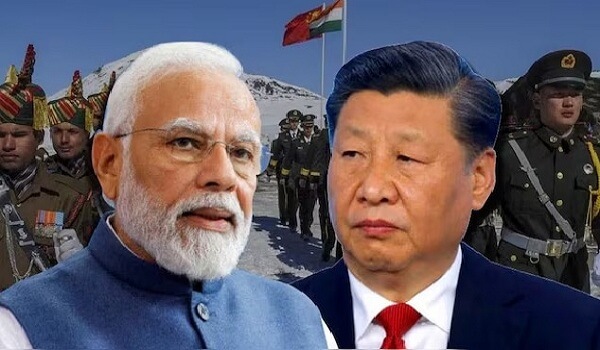There has been recent diplomatic progress between India and China over the Line of Actual Control (LAC). After a gap of five years, the Prime Ministers of the two countries and Xi Jinping plan to meet on the sidelines of the BRICS summit in Kazan, Russia. The meeting comes at a time when China has attempted to reach an agreement on key friction points regarding patrolling rights along the LAC in eastern Ladakh. The situation comes after years of ongoing military standoff since the 2020 Galwan Valley clash, indicating a possible easing of escalating tensions along the border.
Galwan Valley clash and its aftermath
- In May 2020, clashes between Indian and Chinese troops took place at places like Pangong Tso and Galwan in the Ladakh region.
- On the night of 15 June 2020, a violent clash broke out in the Galwan Valley, resulting in the death of several Indian and Chinese soldiers. The clash was one of the most serious border disputes in decades.
- Subsequently, both countries increased the number of troops in the area and deployed heavy weaponry.
Line of Actual Control
- The Line of Actual Control (LAC) serves as the de facto border between India and China, extending across the rugged terrain of the Himalayas.
- The origin of the LAC can be traced back to the Sino-Indian War of 1962, which resulted in a significant territorial dispute.
- It is approximately 3,488 km long and is divided into three sectors: the western sector in Ladakh, the central sector in Uttarakhand and Himachal Pradesh, and the eastern sector which largely follows the McMahon Line in Arunachal Pradesh.
Highlights of the recent patrolling agreement
- Patrolling rights restored in Depsang Plains and Demchok: Under the agreement, Indian troops will now be able to patrol PP 10 to 13 in Depsang and Charding Nala in Demchok, a major step towards resolving a long-standing issue.
- Agreement on patrolling protocols: Both countries have agreed to patrol the old points of the Line of Actual Control (LAC). Indian patrols will take place twice a month, and each patrol will consist of 14-15 soldiers to avoid clashes. Patrolling schedules will be coordinated so as to avoid any confrontation.
Confidence building and winter planning
- The agreement aims to restore trust between the two countries. Under this, there will be monthly commander-level meetings, and there are plans to reduce the overall deployment of troops, especially for winter.
Strategic importance of Depsang Plains
- Depsang Plains is a strategically important area, located near the Karakoram Pass in the north. This flat area is important for both countries as it can be used for military invasion or infiltration.
- The bottleneck or Y-junction, which is a key part of the region, is located 7 km east of the Indian Army base and is on the Darbuk-Shyok-Daulat Beg Oldie (DSDBO) road.
Significance of the agreement
- The agreement has raised hopes of restoration of diplomatic and political relations between the two countries.
- It is a significant step towards reducing military tensions in disputed areas between India and China, especially when China had previously refused to discuss these issues.
Prime Minister of India meet the President of China
Bilateral border agreements
- The resolution of the conflict on the Line of Actual Control (LAC) requires bilateral diplomatic cooperation.
- Previous border agreements were effectively negotiated during international summits.
- Both countries have established diplomatic protocols for border dispute resolution.
Diplomatic Precedents
- The Doklam dispute was resolved through high-level talks in 2017.
- The Galwan clash will be discussed during the SCO Summit in 2022.
- Such high-level meetings have historically helped resolve border disputes.
Strategic Objectives
- To establish a framework for resuming patrolling along the lAC.
- To discuss disengagement at the remaining friction points namely Depsang Plains and Demchok.
- To restore peace and tranquility along the border to the pre-2020 status quo.
International Obligations
- Discussions regarding membership of both countries in BRICS and other international forums.
- In accordance with existing bilateral agreements and protocols.
- In line with diplomatic norms for resolution of disputes.
Bilateral Relations
- To improve overall bilateral relations.
- Aims to address geopolitical and economic issues.
- To advance strategic dialogue at the highest level.

